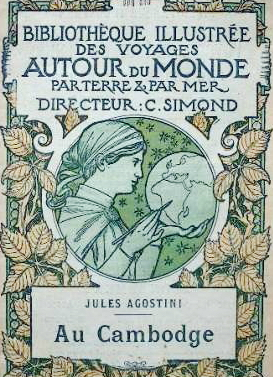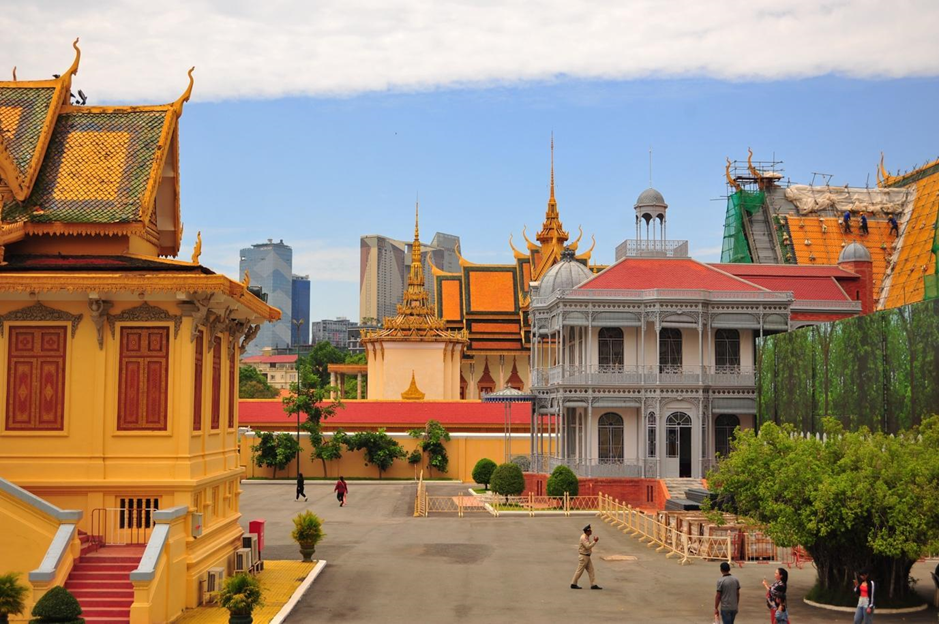Lights of Exoticism: The flamboyant life of Jules Agostini, engineer, explorer and photographer from the ends of the earth (1859–1930)
- Editorial team

- Aug 7
- 4 min read
Born in 1859 in the hamlet of Arbarella, on the rugged and proud island of Corsica, Jules Agostini grew up in fin-de-siècle France, with a vivid imagination for distant lands and the strangeness of other places.

A son of the Mediterranean, he cultivated a passion that would soon take him far from his Latin roots: exploration, which combines scientific rigour with a taste for adventure — but also the art of photography, then emerging as a medium of modernity.
From Corsica to the Far East: A civil engineer takes on the world
Before becoming a photographer, Agostini was first a ‘bridge and road driver’ and later a chief engineer. At a time when French colonies were redefining notions of foreign lands, mission and modernity, he embraced the expatriate life, tirelessly travelling across Cambodia, New Caledonia, Tahiti, the New Hebrides and the Marquesas Islands. For eight years, he was an active figure in the imperial construction projects in Oceania and Southeast Asia, building and supervising roads and bridges, connecting people and their destinies, while capturing on film the faces of societies facing the upheavals of the century.
But while Agostini belongs to the great family of 19th-century colonial engineers, he stands out for his keen eye and his profound sense of visual storytelling. An amateur, certainly, he nonetheless captured the soul of everyday life: the bustle of a Khmer market, the silent elegance of the pagodas of Phnom Penh, the tumult of urban life on the banks of the Tonlé Sap, and the shifting shadows of the indigenous peoples of Tahiti and the Marquesas.
Photographs and Collections: Bearing Witness to the Other
Agostini's photographic work is not simply a documentary or ethnographic record; he composes striking scenes with his camera, where the exotic veneer of the colony allows a vibrant humanity to shine through. His artistry with light brings both landscapes and characters to life.
In 1894, he published "À travers le Cambodge: Vues photographiques," a precious collection that still fascinates historians, photography enthusiasts, and lovers of a Cambodia that has disappeared. The book—difficult to find in its original version, but whose images have been made available to us by the Bibliothèque nationale de France—immerses us in the intimacy of a country, between lavish grandeur and harsh daily life.

This was followed by ‘Au Cambodge’ (In Cambodia), ‘Les Îles sous le vent’ (1899), then ‘Folklore de Tahiti et des îles voisines’ (1900), all testimonies of changing island societies, often marked by poetry, mistrust or mutual astonishment — between European perspectives and Pacific cultures.
A Friend of Painters
The legend of Agostini enjoyed a spectacular revival in the 21st century when, in 2015, a previously unseen photograph of Paul Gauguin and his Tahitian models, taken around 1896 in the artist's house on the island of Moorea, emerged from the Agostini collection. The photographer had been invited, along with his colleague Henri Lemasson, to share the studious and bohemian days of the post-impressionist master, bearing witness through images to the links between art, travel and otherness.
His rare photograph of the ‘Maison du Jouir’, Gauguin's home and studio in Puna'auia near Papeete, is a precious document of art history and the Tahitian myth among French painters of the late 19th century.
The colonist's gaze and the artist's gaze
Far removed from standardised colonial clichés, Agostini became one with the time and the country. His ‘amateur status’ gave him a rare freedom of observation. He captured moments of sociability, work and contemplation within the Khmer, Tahitian and Marquesan communities. His attention to detail and delicate framing demonstrate a desire for respect and exchange, in contrast to the domineering gaze or simple exoticism of the time.
His career as an explorer is also reflected in the diversity of his subjects: from the beach at Pomaré in Tahiti (photo from 1899) to ‘Old and Young Tahitian Women’ and the famous Marquesan sculpture ‘Head with Horns’ immortalised by his lens, each shot treads the fine line between realism and poetic licence.
Legacy, rediscovery and legends
Agostini died in Nice in 1930, leaving a discreet, almost forgotten mark on the history of French photography.
It was not until the work of collectors, historians and curators – as well as some recent controversy surrounding the attribution of certain statues to Gauguin, based on photographs signed by Agostini – that the richness of his legacy was rediscovered.
Beyond his works, a certain mystery continues to surround the figure of this ‘enlightened amateur’ engineer, a bridge between worlds and a lucid witness to an era when Europe was discovering, with fascination and ambivalence, the plurality of other places.
Major works by Jules Agostini
1894: À travers le Cambodge: Vues photographiques (Through Cambodia: Photographic Views)
1898: Au Cambodge (In Cambodia)
1899: Les Îles sous le vent (The Leeward Islands)
1900: Folklore de Tahiti et des îles voisines (Folklore of Tahiti and the neighbouring islands)
1905: Tahiti
Jules Agostini, combining technical genius, a thirst for travel and a sensitive eye, stands today as a unique figure in French colonial adventure: a witness who, through art and science, captured the spirit of the times, fixed the image of changing worlds and humbly effaced himself behind the beauty of reality.







Comments